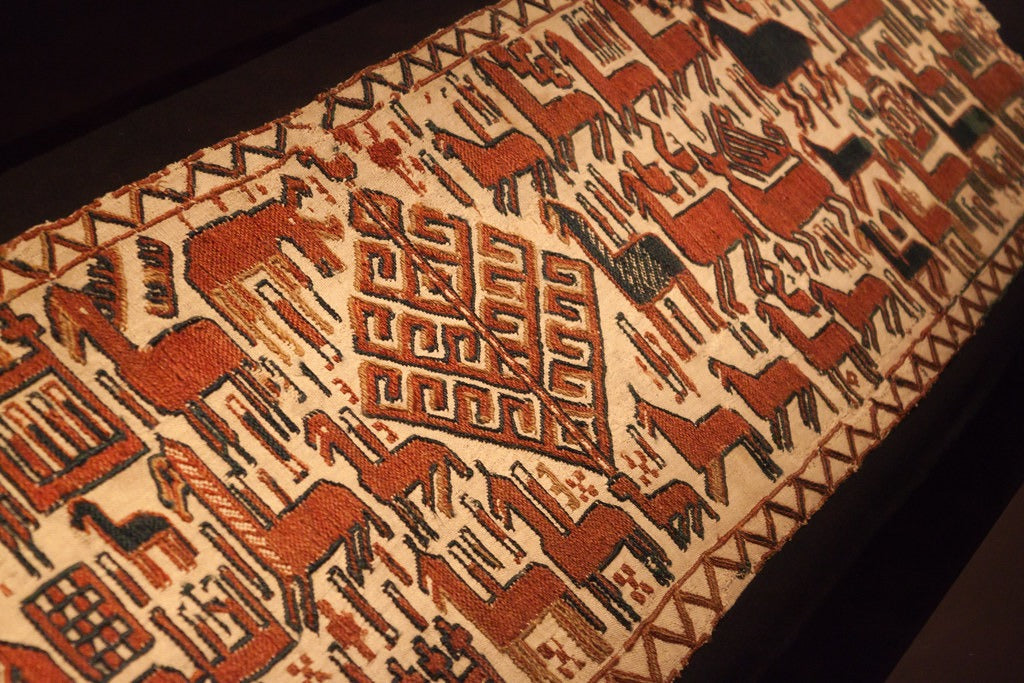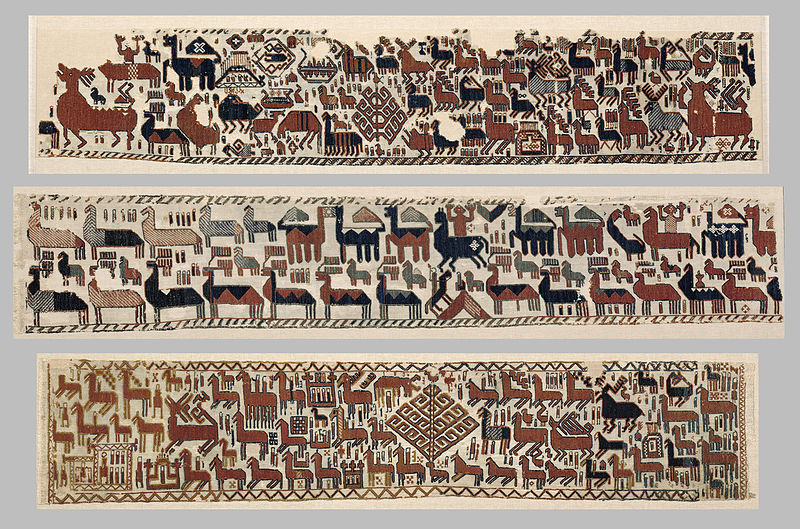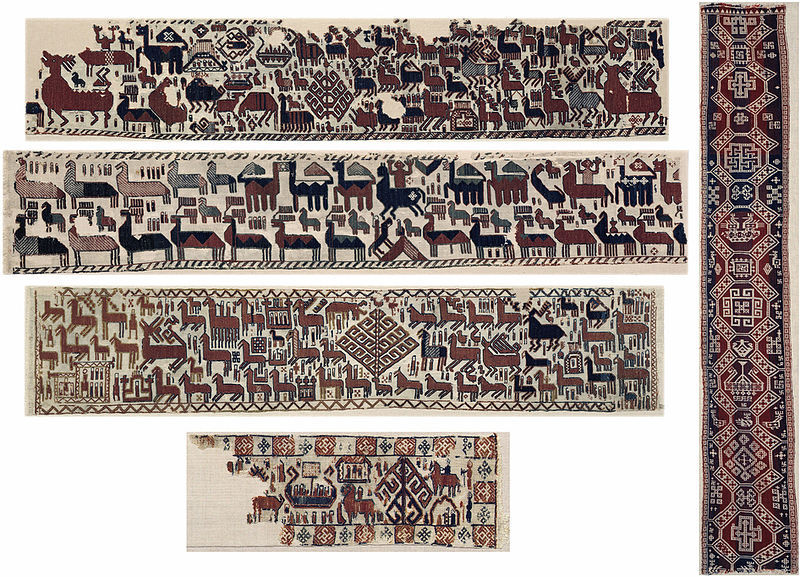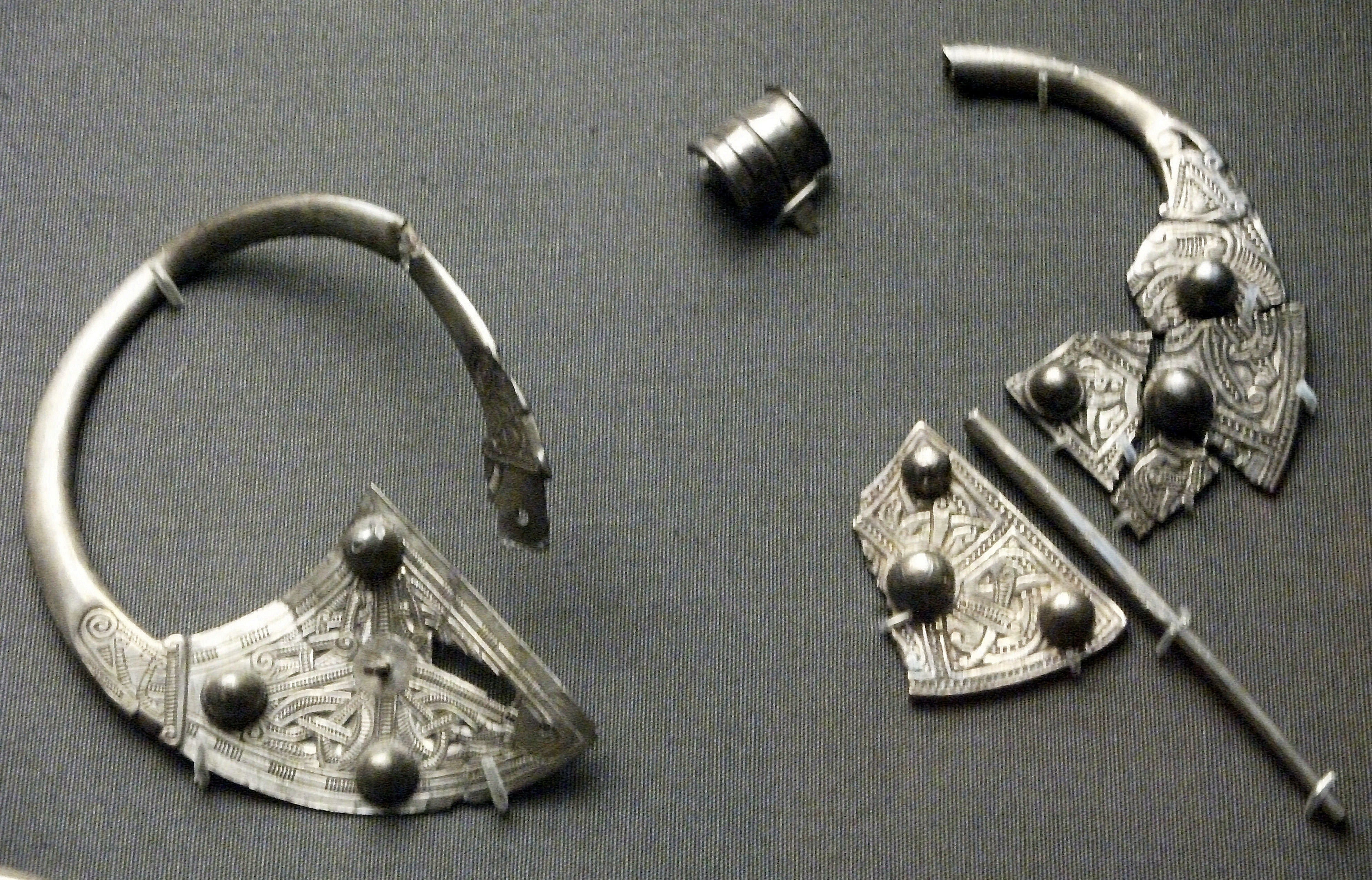
The Överhogdal Tapestries: Medieval Nordic Textile Masterpieces
The Överhogdal tapestries represent one of Scandinavia's most remarkable medieval textile discoveries, comprising five distinct pieces that collectively narrate a complex visual story blending Norse mythology with early Christian symbolism. Discovered in the early 20th century in Överhogdal, Härjedalen, Sweden, these tapestries provide invaluable insights into the transitional period between Norse paganism and Christianity in medieval Scandinavia.
Discovery and Historical Context

Överhogdals church, built in 1740 AC (Photo: Smiley.toerist CC BY-SA 3.0)
Initial Finding and Documentation
The tapestries were discovered in 1909 in Överhogdal Church, Härjedalen, by the Swedish priest Paul Jonze. During a routine inventory of church property, Jonze found the textiles stored in the church loft, where they had remained largely forgotten for centuries. The initial discovery prompted immediate interest from the academic community, leading to their transfer to the Jamtli Museum in Östersund for proper preservation and study.
Dating and Authentication Process
Recent radiocarbon dating conducted in 2005 at Uppsala University conclusively dated the tapestries to between 1040 and 1170 CE, placing their creation firmly within the period of Christian conversion in Sweden. This dating has particularly significant implications for understanding the cultural transition period, as it coincides with the gradual Christianization of Scandinavia.
Physical Description and Composition

Material Analysis
The tapestries are woven from wool using a technique known as repp weaving, a method characteristic of Viking Age textile production. The wool fibers have been dyed using natural pigments, including madder (red), woad (blue), and various local plants that produced yellow and brown hues. Analysis of the wool reveals it came from both sheep and goats, suggesting local production using readily available materials.
Dimensions and Construction Techniques
The five pieces vary in size, with the largest measuring approximately 2.3 meters in length and 0.35 meters in width. The weaving technique employed demonstrates sophisticated craftsmanship, utilizing both tabby and twill weaves. The density of the weave averages 15-20 threads per centimeter, indicating exceptional skill in textile production for the period.
Imagery and Symbolism
Viking ship detail from one of the tapestries (Photo: Jämtlands Läns Museum CC BY-SA 3.0).
Norse Mythological Elements
The tapestries feature numerous elements from Norse mythology, including what appears to be representations of Yggdrasil, the world tree, and various figures that scholars interpret as Norse gods and mythological creatures. Particularly notable are the depictions of horses with eight legs, potentially representing Odin's horse Sleipnir, and ships that may reference Viking funeral practices or mythological vessels.
Christian Iconography
Interwoven with the Norse elements are distinct Christian symbols, including cross-like patterns and figures that may represent religious processions. This unique combination of pagan and Christian imagery provides valuable evidence of the syncretic nature of religious practice during this transitional period in Scandinavian history.
Historical Events Depicted
The tapestries appear to document both mythological narratives and historical events. Scholars have identified possible representations of significant historical occurrences, including what may be depictions of Viking expeditions or religious ceremonies. The presence of mounted figures, buildings, and ships suggests a narrative connection to real-world events of the period.
Conservation and Current Status

Preservation Efforts
Since their discovery, the tapestries have undergone several careful conservation treatments. In the 1970s, comprehensive restoration work was conducted to stabilize the fibers and prevent further degradation. Modern conservation techniques, including climate-controlled storage and limited light exposure, help preserve these invaluable artifacts for future generations.
Museum Display and Public Access
The tapestries are housed at the Jamtli Museum in Östersund, where they are displayed under carefully controlled environmental conditions. Public access is managed to balance preservation needs with educational value, and high-resolution digital documentation allows for detailed study without risking damage to the originals.
Cultural Significance and Research Impact

Academic Studies and Interpretations
The Överhogdal tapestries continue to be the subject of intensive academic research, with scholars from various disciplines contributing to our understanding of their significance. Recent studies using digital imaging techniques have revealed previously unnoticed details, leading to new interpretations of the narratives depicted.
Contemporary Cultural Relevance
The tapestries remain a significant source of cultural pride in Sweden and continue to influence modern artistic expressions. Their unique blend of pagan and Christian elements provides valuable insights into the complex process of religious and cultural transformation in medieval Scandinavia.
Conclusion
The Överhogdal tapestries stand as remarkable testimonials to the artistic, cultural, and religious transitions of medieval Scandinavia. Their exceptional preservation, complex iconography, and historical significance make them invaluable resources for understanding the Viking Age and early medieval period. As research continues, these extraordinary textiles continue to reveal new insights into the fascinating period of cultural transformation that marked the end of the Viking Age and the beginning of Christian Scandinavia.
Frequently Asked Questions (FAQs)
- How old are the Överhogdal tapestries?
The tapestries date from between 1040 and 1170 CE, as confirmed by radiocarbon dating conducted at Uppsala University in 2005.
- Where are the tapestries currently located?
The tapestries are housed and displayed at the Jamtli Museum in Östersund, Sweden, under carefully controlled environmental conditions.
- What materials were used to create the tapestries?
The tapestries were woven from wool obtained from both sheep and goats, using natural dyes including madder (red), woad (blue), and various local plants for yellow and brown colors.
- What is the historical significance of the imagery in the tapestries?
The tapestries uniquely combine Norse mythological elements with Christian symbolism, providing valuable evidence of the religious and cultural transition period in medieval Scandinavia.
- How were the tapestries discovered?
Swedish priest Paul Jonze discovered the tapestries in 1909 during a routine inventory of church property in the loft of Överhogdal Church, Härjedalen.
References
"Överhogdal Tapestry" by Qhimm is licensed under CC BY-NC 2.0.
Franzén, A. M., & Nockert, M. (1992). "Överhogdaltapeten och andra medeltida väggbeklädnader" (The Överhogdal Tapestry and Other Medieval Wall Coverings). Stockholm: Kungl. Vitterhets Historie och Antikvitets Akademien.
Horneij, R. (2006). "The Överhogdal Tapestries: A Picture Stone in Textile." Viking Heritage Magazine, 3(4), 14-17.
Nockert, M. (1995). "The Högom Find and Other Migration Period Textiles and Costumes in Scandinavia." Umeå: University of Umeå Department of Archaeology.
Nordanskog, G. (2006). "Föreställd hedendom: tidigmedeltida skandinaviska kyrkportar i forskning och historia" (Imagined Paganism: Early Medieval Scandinavian Church Portals in Research and History). Lund: Nordic Academic Press.
Peterson, L. (2018). "Textile Traditions in Medieval Scandinavia." Journal of Norse Studies, 42(2), 78-96.








